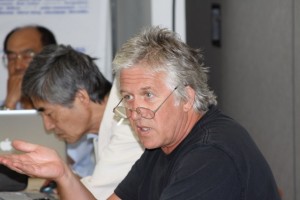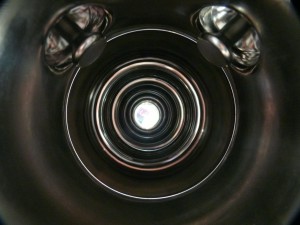Harry Weerts in his Directors Corner article on 11 August described the upcoming year-end changes to the ILC programme in both the LCC organisation and the accelerator design efforts. Since that time the ILC accelerator team has been assessing the impact of the change in direction of the US programme with the emphasis switching from design work back to SRF R&D and value engineering. The goal of the change is to emphasise cost optimisation of the ILC proposal from the current baseline as documented in the 2012 Technical Design Report and subsequent change requests – a laudable goal.
For the past few years the design of the facility has been evolving to account for both baseline improvements, cost optimisation and site-specific features of the preferred Kitakami site in northern Japan. After deliberation by the ILC Technical Board it was decided that without the US support the remaining resources in Japan and Europe were simply insufficient to generate the critical mass needed to sustain such a complex endeavour as the ILC design. Thus there was no choice but to suspend on-going design activities and plan for the eventuality of the US withdrawal. Not only has a significant amount of work been accomplished in the past few years but there is also work in progress that needs to be concluded and documented too.
In the “in-progress” category we have such items as a modified cryogenic layout which addresses the issue of helium maintenance during power outages (the ILC helium inventory is such that a catastrophic helium loss from a site-wide power outage could take up to a year to replenish), a beam commissioning and tune-up scenario that minimises the size and power of the beam dump system, and a positron production area rearrangement that leaves space for a conventional (non-polarised) positron source. In addition these design changes will form the basis of a lattice update and a conceptual layout of the various tunnels in the central region. No new design topics will be started from this point on but all the aforementioned items will be documented in the ILC EDMS database so that when the design efforts resume there is a well defined baseline available from which to start.

Mike Harrison’s role as Associate Director for the ILC will come to a close at the end of the year. Here’s a picture from (good old) GDE times.
In addition to gracefully winding down the design efforts the new emphasis on R&D poses the issue of how best to inject the ILC requirements into the proposed SRF work and technology development. At the most basic level the goals are clear; increase the operating gradient and reduce the component costs thus reducing the ILC construction costs. One level down from these aims however, it becomes less clear. What constitutes sufficient information to actually establish a new gradient specification with confidence that it can be achieved in mass production? The SRF R&D programme up to the Technical Design report was based on results from 87 9-cell cavities to establish an average 31.5 MV/m cryomodule gradient used in the TDR design. While we will not need similar statistics to re-adjust the design value, how many data points are sufficient? How can we ensure that the proposed R&D programme will satisfy technical requirements that haven’t really been established yet? What constitutes an acceptance criterion for a tuner if it doesn’t look like the ones used by the European XFEL? What is the cost (and schedule) of the R&D? In order to start to address these kinds of issues we will attempt to use the upcoming Morioka workshop to arrange special mini-workshops on various topics. At the behest of the funding agencies, the proposed R&D agendas were determined by the main HEP national labs and not the LCC. Morioka hopefully can start a dialogue which will address this imbalance.
Well as they say, all good things must come to an end, and with the upcoming LCC re-organisation, I shall join Brian and Harry as an ex-ILC Directorate member. As of the first of January I will no longer have the role of Associate Director for the ILC and with this, my last Director’s Corner, my burgeoning career as a journalist will also come to an end. It is said that it is not the destination but the journey that’s important in this life and this has certainly been the case for the last decade that I have spent working on the ILC. I have visited many locales and achieved a serious familiarity with the inside of many airports. Possibly a little more of the destination and less of the journey might have been nicer but I would like to take this opportunity to thank all of my colleagues both new and old who have been a pleasure to work with over the years. I feel confident that the next chapter in the saga will remain in good hands. Interesting times indeed!
(“May you live in interesting times” is an English expression purported to be a translation of a traditional Chinese curse. Despite being so common in English as to be known as “the Chinese curse“, the saying is apocryphal, and no actual Chinese source has ever been produced.” — Wikipedia)



Recent Comments